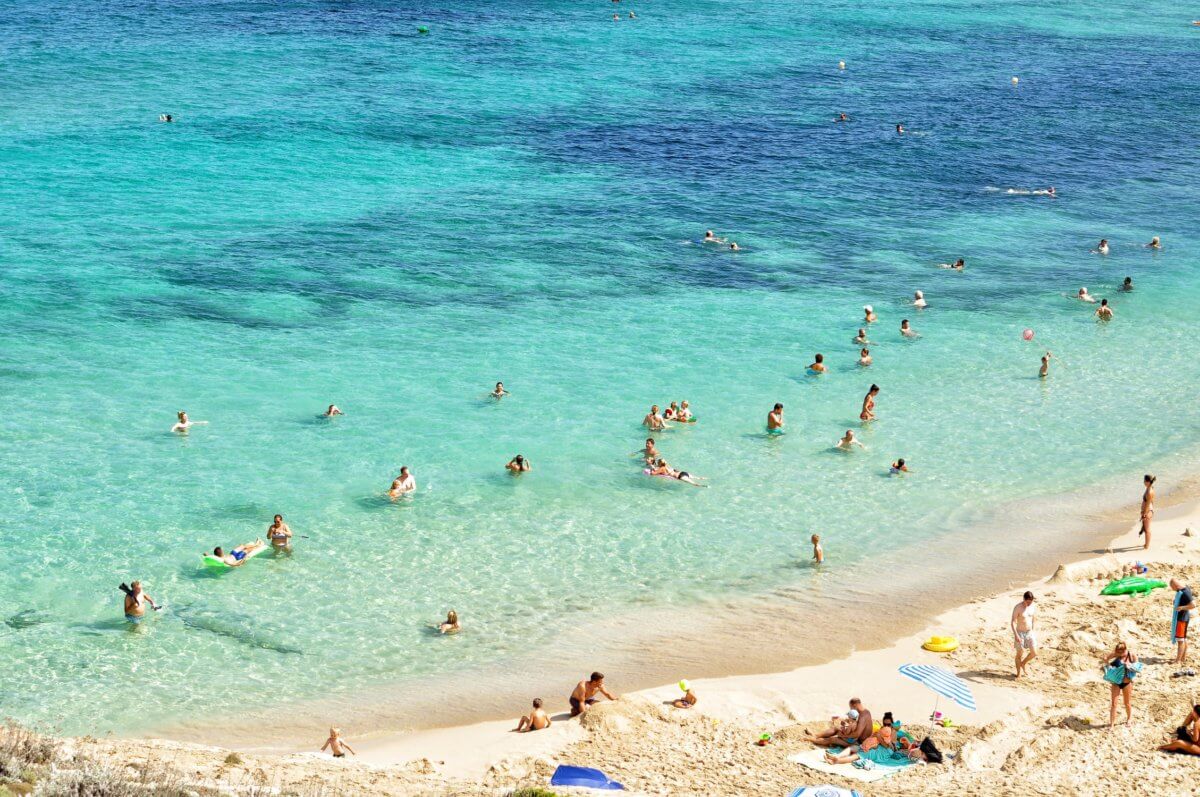Cue Jaws music. On average, three people in Australia die from a shark attack every year. Despite this, media coverage makes it appear much higher. And why not? Ever since Jaws and the subsequent and less famous Sharknado, we have been obsessed with sharks. We all know the stats, but it is hard to think of them when a shadow moves next to you while swimming at a secluded beach.
Luckily the Australian Government has stepped up to protect beachgoers. Otherwise, whatever would we do? Although, attitudes are beginning to change, the blanket solution has been to install shark nets. The idea seems simple; it’s a big net that stops big bad sharks getting in.
In practice, these arbitrary nets are not just ineffective at stopping sharks, but also have significant impacts on marine life.
SHARK NETS
The majority of nets that are used are Gillnets. These are walls of netting that hangs in the water and entangles sharks. They have been in use since 1936 and despite numerous research papers, are still used in NSW and Queensland.
It is important to note that shark nets are NOT shark barriers. They work upon the principle “fewer sharks, fewer attacks”. They are designed to reduce shark attacks by killing sharks, not by excluding them.
Currently, there has been no shark attack deaths within shark netted areas. Success right? Well, not quite. According to Greens Senator, Peter Whish-Wilson this isn’t because of shark nets but rather, where they are placed. He stated that, “Luckily there were no fatalities inside shark nets [zones] but the reason for that is that most of the beaches around the country that are netted are also patrol beaches,” He then went on to say, “A lot of the fatalities we’ve seen are in really remote locations where you can’t put in shark nets or drum lines or surf life saving towers, or even have aeroplanes.”
Shark nets do not stop sharks from reaching swimmers. They are only effective at killing sharks, not in excluding them from an area. More research is needed to determine if it really is shark nets that are keeping shark attack numbers low. What isn’t contentious though is the serious negative effects shark nets have.
IMPACTS
The largest environmental impact of shark nets is its bycatch. The nets do kill a large number of the targeted sharks like Great Whites. However, other animals like whales, turtles and other marine life can also become entangled in these nets. In 2016, Queensland shark nets captured 82 animals other than sharks. Just under half of these animals survived. Of the ten dolphins that were caught, only one survived.
The nets in Queensland also caught 695 sharks, with most of the sharks dying. Some of these sharks were endangered species. The Queensland shark net program is responsible for killing 36 hammerheads, 90 blacktip reef whalers, and three grey nurse sharks. All these sharks are listed as either endangered or venerable. Is all this worth it? Especially if the effectiveness of shark nets isn’t proven.
ALTERNATIVE SOLUTIONS
It may seem that I’m being a little too harsh on shark nets but it’s not like it’s the only solution out there. NSW and Queensland are currently the only states still using nets. Other states have adopted more humane and targeted shark management strategies.
MESH BARRIERS
Mesh barriers or ‘eco nets’ look very similar to shark nets but operate in an entirely different manner. They are used in parts of Western Australia and work like people think shark nets do. They create an enclosure for swimmers that excludes sharks. The mesh of these barriers is also much smaller than a shark net. This means that animals do not get caught up in the net, which reduces bycatch and mortality.
SMART DRUMLINES/TRACKING
Another option that is used are SMART (Shark-Management-Alert-in-Real-Time) drumlines and tracking technology. SMART drumlines are baited hooks that are not designed to kill a shark. According to NSW DPI, “when a shark is hooked, the pressure on the line triggers the communications unit which alerts DPI scientists or contractors via phone call, email and text message to the presence of an animal on the line.” The animal is then released by fisheries officers.
Along with SMART drumlines, captured sharks are being tagged and tracked. The database is still being built but this solution offers the most accurate and up-to-date information for fisheries. Rather than just hoping that a shark didn’t miss the shark net, fisheries officers can know exactly when to put out a shark warning.
LOOKING FORWARD
The alternatives discussed are currently used in conjunction with shark nets in some states. We need to match science with policy. I know state and federal and state governments are struggling with it at the moment, but this is a lose-lose strategy. Shark nets are not effective at killing the right species, they are devastating for other marine life and do not fully protect swimmers.
I don’t think we can change everyone’s perspectives on sharks; they are scary. But if you are really scared of sharks, then mesh barriers, SMART drumlines and tracking offer way more peace of mind. Shark nets are archaic. They were developed in the 30s before any significant shark research. With so much evidence supporting more humane alternatives, we need to phase them out.
We acknowledge the Ngunnawal and Ngambri people, who are the Traditional Custodians of the land on which Woroni, Woroni Radio and Woroni TV are created, edited, published, printed and distributed. We pay our respects to Elders past and present. We acknowledge that the name Woroni was taken from the Wadi Wadi Nation without permission, and we are striving to do better for future reconciliation.
